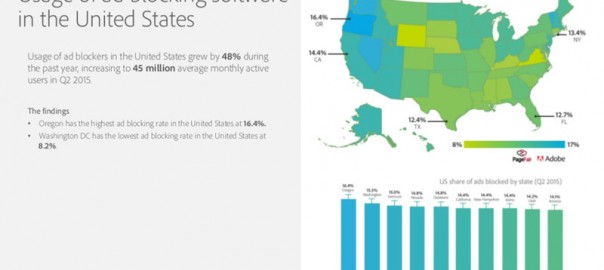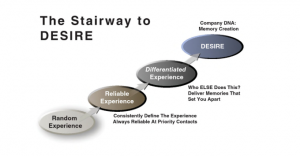It’s time to move beyond “people-based marketing” as a catchphrase and jump on board. Columnist Mike Sands discusses how it will help brands connect with people and create more relevant messages.

“It was the best of times, it was the worst of times.”
While this quote was made famous in the 19th century, perhaps no truer words can be spoken about the state of digital marketing today.
On one hand, marketing spend continues to increase. According to recent research from eMarketer, nearly a third of CEOs in the US say they plan to increase spending on advertising over the next 12 months, and nearly a quarter plan to increase spending on marketing and sales promotion.
With $60 billion spent on digital ads in the US in 2015, marketers seemingly have more resources at their disposal than ever before.
But meanwhile, the industry faces some tough challenges, including growing consumer backlash against digital ads that hurt the user experience without offering real value. Statistics show there are 45 million active ad block users in the US as of June 2015.

And with display ad click-through rates (CTRs) averaging six clicks per 10,000 impressions — and remaining stagnant since 2010 — it appears that marketers aren’t doing their job when it comes to reaching consumers at the right time with relevant content.
For two decades, digital promised to be the marketing revolution that would reduce costs, make it easier to measure outcomes and create more timely and engaging interactions with consumers. But the reality in 2016 is quite different from this vision.
Marketers find themselves amid a proliferation of touch points and a tangle of disparate technology platforms and customer identifiers. The majority of marketers don’t have a single view of their customers across channels, and only 20 percent say they use cross-channel data and attribution to evaluate marketing.
It’s actually harder than ever to understand customers and their complex decision journeys.
So how can the promise of digital finally be realized, truly making this the best of marketing times? If digital advertising is broken — and is actually alienating the very people marketers are trying to engage — where do we go from here?
I believe the next phase of digital marketing will be laser-focused on relevance and context. Old cookie-based approaches will be left behind for new strategies that leverage first-party data — the richest information available about a brand’s own customers — to execute people-based marketing across online and offline touch points.
People-based marketing is a strategic discipline that focuses on connecting brands with actual individuals across devices and channels, in real-time. Because people-based marketing is a combination of in-the-moment relevance and deep knowledge, it enables marketers to consistently recognize their customers across web and mobile channels, create more seamless and personalized experiences and ultimately change how digital marketing impacts the bottom line.
The term, “people-based marketing,” which first appeared in 2014 with the launch of Facebook’s Custom Audiences solution, isn’t just another buzzword: Brands are experiencing significant benefits. Advertisers utilizing Facebook’s solution, for example, see an average click-through rate that’s 10 times higher than for Facebook ads that aren’t powered by a brand’s own data.
Here are five reasons why people-based marketing isn’t just a good idea; it’s a necessity.
1. Target customers with pinpoint accuracy
If the ad blocking and click-through rate statistics cited earlier are any indication, consumer expectations of brands are higher than ever, especially when they’re online.
People-based marketing is powerful because it uses the wealth of information brands have about their existing customers to reach the right person with the right message.
2. Use the highest-quality data
People-based marketing should be powered by first-party data, the freshest and most accurate information about a brand’s customers. In a recent Econsultancy study, 82 percent of marketers said they plan to increase their use of first-party data this year because of the value it adds to customer understanding and engagement.
First-party data is based on direct interactions with customers, providing immediate, unique and granular customer insights that could never be gleaned from assumptive third-party “lookalike” data.
3. See the entire customer journey
The cookie-based tracking methods marketers have used for 20 years don’t work well across all web and mobile devices, so having insight into every touch point in the customer journey is nearly impossible.
With a people-based approach, marketers know who they are reaching, who is converting, what campaigns are driving conversions and which audiences and campaigns are driving more revenue.
4. Trim the fat of wasted ad spend
Advertisers want to “buy” only the people they want to reach. No more, no less.
Targeting real people enables more accurate measurement of reach and frequency across devices. It’s more efficient than the “spray-and-pray” approach of targeting broad demographic segments or unreliable collections of web cookies.
5. Create more relevant messages
Consumers like to feel special, as if someone took the time to really get to know them. A people-based approach results in more relevant marketing, and relevance is a key factor in getting consumers to respond.
A recent study of Facebook’s solution, for example, found that a people-based approach achieved conversion rates 3.87 times higher than demographic or category-based targeting.
Remember those increasing marketing budgets we discussed earlier? They also come with a requirement to prove returns on investment to the C-suite.
People-based marketing is the key to demonstrating marketing’s value to the CMO and to the consumer. Disruptive technologies are paving the way for a new era in which the tale of right person, right message, right time is actually real — and achievable.
Some opinions expressed in this article may be those of a guest author and not necessarily Marketing Land. Staff authors are listed here.
(Some images used under license from Shutterstock.com.)
Marketing Land – Internet Marketing News, Strategies & Tips
(52)
Report Post






